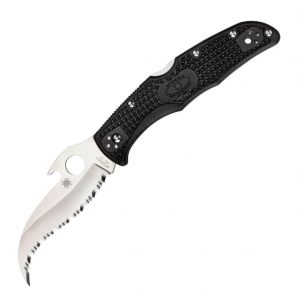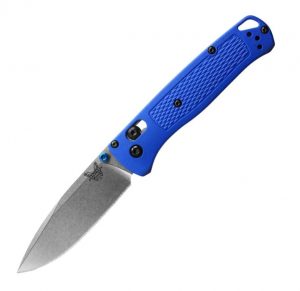What’s the Real Difference?
Let’s clear something up: just because a knife looks like it could repel a zombie horde doesn’t mean it’s the best fit for opening Amazon boxes or slicing apples on your lunch break.
Tactical knives and EDC (Everyday Carry) knives often get tossed into the same bin—sometimes literally. But while they can overlap, they’re built with very different missions in mind. Whether you’re commuting to the office or training for the apocalypse, knowing what sets these blades apart can make all the difference.
So, What Makes a Knife “Tactical”?

It’s more than just black paint and aggressive angles (though, let’s be honest, those don’t hurt).
Tactical knives are designed for high-stress, high-stakes situations—think military use, self-defense, emergency response. That means:
- Fast deployment – one-hand opening is a must
- Strong, grippy handles – wet hands? Gloves? No problem
- Pointy with purpose – blades often have a tip optimized for penetration
- Durability – these blades are built to take a beating and keep slicing
Take the Spyderco Matriarch 2, for example. Based on the original Civilian model, it features a viciously serrated reverse-S blade that’s all business. Designed with input from law enforcement, the Matriarch 2 is compact, light, and devastatingly effective in close-quarters defense. It’s not the blade you loan to your cousin for opening his mail—it’s the one you reach for when things get hairy.
When to Go Tactical
Tactical knives shine in situations where performance and reliability under pressure are non-negotiable. They’re ideal if you:
- Work in law enforcement, military, or security
- Train for self-defense or martial arts
- Spend time in remote areas or survival scenarios
Basically, if your “oh no” moments are bigger than a broken zip tie, a tactical blade has your back.
What Makes an EDC Knife Tick?

Now, EDC knives are your daily driver—they live in your pocket, handle most cutting tasks with ease, and won’t raise eyebrows when you pull them out at a BBQ.
Typical EDC features:
- Simplicity and comfort – lightweight and easy to carry
- Utility-focused design – plain-edge blades, drop-point shapes
- User-friendly – non-aggressive styling, legal carry length in most areas
Think Spyderco Para 3 and the Benchmade Bugout. These knives slice, peel, cut, and pry without looking like they belong on a SWAT vest.
The Best of Both Worlds: Crossover Blades

Some knives toe the line beautifully. Tactical enough to handle stress, subtle enough for daily life. Here are a few crossover champs:
- Benchmade Griptilian – Strong grip, smooth axis lock, and ready for EDC or field use.
- Kershaw Blur – Assisted opening, grippy scales, and a blade that balances utility and attitude.
Summary
Tactical knives are built for the tough stuff—self-defense, survival, and worst-case scenarios. EDC knives, on the other hand, are the quiet heroes of everyday life. Choose based on your mission: if you’re commuting, go light and practical; if you’re patrolling, training, or preparing for chaos, go tactical.
What’s Your Take?
Are you rocking a low-key slicer or a high-speed tactical terror? Got a favorite crossover blade?
Drop your go-to knife in the comments or tag us in your EDC photo—let’s see what you’re carrying and why.
#TacticalVsEDC #KnifeDepotCarry




August 28, 2025 at 2:30 am
Great breakdown. I carry a Bugout daily—light, simple, perfect for office life. But when camping, I swap to a Griptilian. Different missions, different blades, both get the job done.
September 9, 2025 at 10:17 pm
Honestly, it’s kind of like comparing combat boots to running shoes — sure, both cover your feet, but you wouldn’t wear one to do the job of the other. I’ve got a decent EDC for the daily grind (mostly box duty), but I keep a more tactical option in the glove box just in case things get weird. Different tools for different vibes.
October 16, 2025 at 4:05 am
I’ve carried a fixed blade for years, but never thought of the other uses like food prep. Thank you.
November 26, 2025 at 12:38 am
Choose based on your mission: if you’re commuting, go light and practical; if you’re patrolling, training, or preparing for chaos, go tactical.